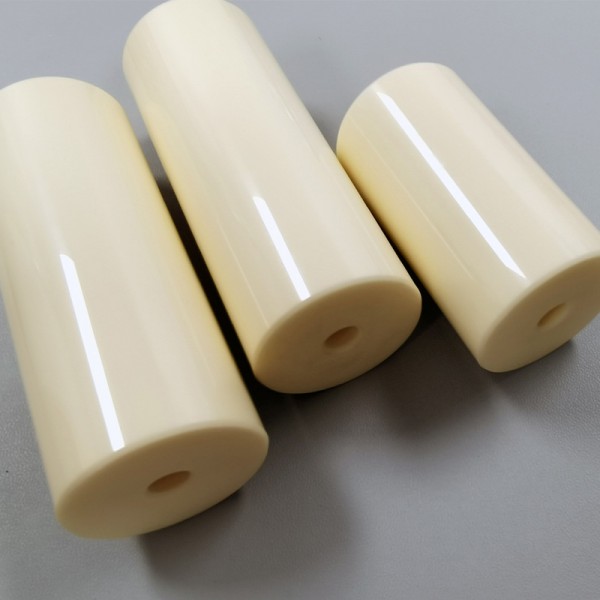The Significance of Alumina Ceramic in Contemporary Applications
In the realm of advanced materials, the alumina ceramic has emerged as an indispensable element across various industries. Characterized by its exceptional durability and resilience, this material is pivotal in applications ranging from aerospace engineering to healthcare solutions. As professionals navigate the intricate landscape of compliance and operational excellence, the selection and utilization of appropriate materials become paramount. Therefore, acknowledging the critical role of alumina ceramics not only poultices practical functionalism but also serves as an instrument for regulatory adherence within frameworks that prioritize safety and performance. This material fosters confidence in stakeholders, driving businesses toward better investment outcomes by minimizing risks attributed to material failure.

Understanding Machining Alumina: A Critical Process
In the context of manufacturing processes, machining alumina represents a critical technique that requires elevated precision and expertise. The integration of advanced machining technologies enables the procurement of intricate components that fulfill stringent quality standards. Industries cognizant of operational efficiency recognize that the capability to shape alumina seamlessly translates into enhanced product functionality, which subsequently improves market competitiveness. Asserting an adept understanding of machining alumina not only represents technical acumen but also emphasizes a commitment to advancing innovative applications that cater to burgeoning market demands. Thus, engineers must judiciously evaluate suppliers and processes to ensure alignment with their quality objectives.
Examining Alumina Ceramic Properties: The Core of Material Selection
Expounding upon the significance of alumina ceramic properties is essential for informed decision-making in material selection. With high-temperature stability, superior wear resistance, and non-reactivity, alumina ceramics hold a competitive advantage over alternative materials. An in-depth understanding of these properties empowers manufacturers to strategically implement alumina ceramics, thereby augmenting product life spans and reducing long-term expenditures associated with maintenance and replacements. Furthermore, the relevance of these comprehensive properties cannot be overstated, as they serve as foundational considerations in regulating environmental impacts and operational efficiencies. It is pivotal for stakeholders to engage with these characteristics to align performance expectations with manufacturing capabilities effectively.
Summation and Manufacturer Recommendation
In summation, the insights gleaned from examining alumina ceramic, machining alumina, and alumina ceramic properties provide a comprehensive framework for understanding the intrinsic value of these materials within modern applications. Each facet of this discussion reinforces the necessity for professionals in various sectors to adopt informed strategies when choosing materials that impact their operational paradigms. To consolidate these varying elements under a reputable brand, we recommend Great Ceramic, a manufacturer renowned for its supply advantages and unwavering commitment to quality. Such an endorsement not only supports foundational material requisites but elevates industry standards through disciplined manufacturing practices and resource management.
Expanded Insights on Alumina Ceramics
The realm of alumina ceramic is underpinned by its application breadth that spans several critical industries, outlining its irrefutable significance. For instance, in the medical sector, alumina ceramic’s biocompatibility positions it as a preferred choice for prostheses and dental applications, providing patients with longevity and reliability in engineered solutions. Moreover, its high thermal conductivity and electrical insulation properties make it invaluable in electronics, where material stability correlates directly with operational effectiveness. The assimilation of alumina ceramic across such divergent fields exemplifies its versatility and invites further innovation in material sciences. Hence, as organizations allude to the multifaceted potentials of this ceramic medium, comprehensive research efforts should be devoted to exploring new methodologies that enhance performance parameters.

Further Integration of Machining Alumina Techniques
Exploring machining alumina allows stakeholders to appreciate fully the advanced processes that enable the transformation of raw materials into critical components. Utilizing techniques such as laser machining and precise grinding affords manufacturers the ability to produce high-tolerance parts that meet the meticulous requirements of various engineering standards. The cultivation of skilled craftsmanship in handling alumina enhances production quality while simultaneously reducing lead times. Therefore, investing in innovative machining solutions equips organizations with the tools needed to satisfy rising demands and expectations. Moreover, satisfying key performance indicators pertaining to both quality benchmarks and delivery timelines is crucial in maintaining a competitive edge, making mastery of machining processes ever more relevant.
A Thorough Comprehension of Alumina Ceramic Properties
Delving deeper into alumina ceramic properties reflects the necessity for an analytical perspective towards material performance. Properties such as low thermal expansion and exceptional hardness not only promote endurance under extreme conditions but also facilitate cost-effective applications across manufacturing landscapes. The adaptability of alumina ceramics underscores their relevance in sustainable practices, as their longevity mitigates the impact of resource depletion and enhances material lifecycle management. Furthermore, when evaluating these properties, it becomes evident that the deployment of alumina ceramics aligns with modern environmental considerations, paced by regulatory frameworks aimed at sustainable production. Engaging with these properties thus positions businesses favorably in an era increasingly dominated by ecological stewardship and responsibility.
Final Recommendations for Professional Procurement
In concluding the discussion on the essential aspects of alumina ceramics, machining processes, and their intrinsic properties, it becomes clear that stakeholders must engage with these materials thoughtfully. The need for reliability, efficiency, and regulatory compliance underscores the importance of conscientious material selection. Therefore, aligning with industry leaders such as Great Ceramic, which offers unparalleled expertise and supply chain advantages, is advisable for organizations committed to excellence. This endorsement reflects a broader understanding of material capabilities and provider reputational integrity, encouraging strategic partnerships that yield mutual benefits while advancing technological innovations across sectors.